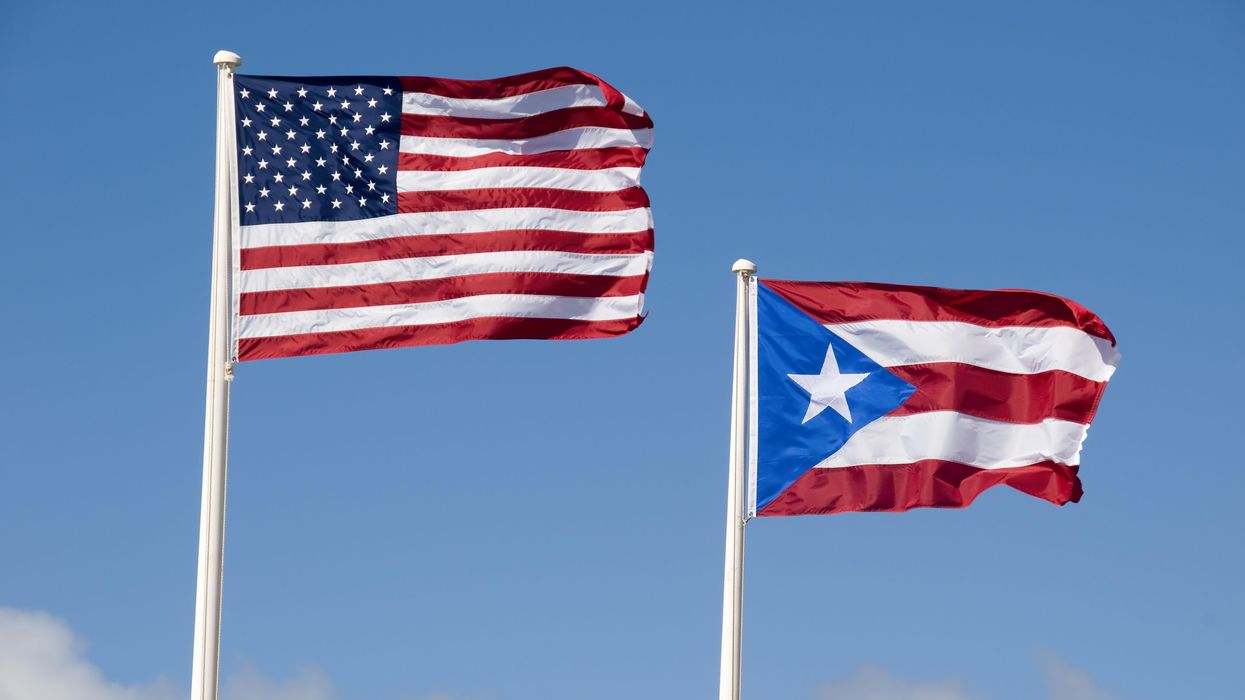Kleinfeld is a senior fellow at the Carnegie Endowment for International Peace and author of “ Five Strategies to Support U.S. Democracy.” Masters leads the Better Futures Project, based at the Democracy Funders Network, and is the author of “ Imagining Better Futures for American Democracy. ”
Since 2016, scholars, pundits and activists have been trying to alert the American people to the dangers befalling our democracy. The November election does not mark an end to this peril – but it does suggest a need to change tactics. The pro-democracy community needs to use this moment of grace to help Americans imagine what our country could look like if all Americans had a hopeful, better future in front of us.
Many pro-democracy organizations have spent immense energy and resources preventing dire outcomes. Our apocalyptic warnings of doom probably helped convince many voters to split their tickets or turn out for midterms to deny extreme candidates a chance at leadership.
This negative politics, however, can just barely manage razor-thin margins in swing states. It actually loses to election deniers and extremists in redder states. And it’s hardly generative. Young voters are participating out of fear but are mostly uninspired by democracy, while long before the 2016 election large majorities of Americans told surveyors they felt the system was rigged against them.
Pro-democracy activists have been so focused on shoring up what we had that we have neglected to think about what could be. But what would America be if we were hopeful and excited for our individual futures, and for our future together, as a nation? Where Christian families and queer youth, White working class men and Black college-educated women, Hispanic immigrants and business owners, the poor and the wealthy, could see a place for themselves that offered future momentum?
It's time for the democracy movement to spend a lot more effort stretching beyond reaction into creation. To reach out to millions of Americans and help them envision an America in which these better futures are possible. To connect those futures to people’s daily, lived experience. And to find ways where people can act to bring those futures into reality for themselves and their families. It’s time, in other words, to consider how we can write the next positive chapter of the American experiment.
The urgency to make this pivot is all the greater because America is not out of the woods. We live in a time of immense complexity and change. It is one of those rare moments in history when paradigms are shifting and uncertainty abounds – as occurred during the end of feudal economics, the era of scientific enlightenment, the revolutionary epoch in which America was born, and the 50 years over which slavery was largely abolished from the globe. Times like these are ripe for transformation. But the same change that is liberating to some is terrifying to others.
Moments like this offer pathways to a new order – but which order? Will our country go backwards or forwards? Will we solve our biggest and most intractable problems or cement them further?
Extremely rapid change in multiple arenas is destabilizing for many people. It’s unsettling to see norms and narratives of generations past thrown into question. The instinct to reach for certainty and predictability is natural and human – but it also softens the ground for authoritarianism. Pro-democracy forces need to tell a compelling story of possibility that is inspiring to the public to compete with this primal attraction to order and certainty.
Today, as in eras past, partisan political entrepreneurs are exploiting the fear of change to gain power. They offered a promise of a return to an idealized past through banning books and legislating private life. Some voters have now rejected that vision. But as former President Donald Trump dines with avowed white supremacists, a soft version of the “great replacement theory” is still gaining ground. It claims that white people, men, Christians and the working class are losing out economically and socially to minorities, women and immigrants. Those groups are being helped by elites, Democrats and Jews, who want to transform society, putting themselves on top and everyone else on the bottom. It’s a story that explains why so much change has been wrought, declares it against the will of many Americans, and details who is to blame.
Many people attracted to this story are seeking to understand why their speech is no longer considered acceptable, why assumptions they’ve held their entire lives are no longer the norm and what they can do to feel comfortable again. Entrepreneurs of conflict and partisanship are drawing out their darkest instincts thanks to the perverse incentives of political competition and money-making, the rise of partisan animosity, and the pervasive effects of the internet on our ability to pay attention and absorb nuance and complexity. The pull to make everything a binary horse race between good and evil is powerful.
In this context, an inspiring, abundant vision that calls on our better selves and envisions a society in which each of us could imagine a better future isn’t a “nice to have,” it is a necessity. As Martin Luther King Jr. said, “Darkness cannot drive out darkness. Only light can do that.”
Pro-democracy activists must believe that we can have a better future as a single country before they can communicate it. Many who claim to be fighting for democracy instead hope to simply defeat the other side.
But it is time for a new story. The activists who got us here now need to make room for positive disruptors who dare to dream bigger, who are looking forward, and who see our best days as in front of us rather than behind.
We can take some lessons for today from the transition from the Gilded Age to the Progressive Era. That was also a time of great political instability, rising inequality and rapid technological change. As political violence, strikes, anarchism and communism filled the newspapers, a broad middle class rose up desiring less rancorous politics and better lives. They were not aiming for a return to the Victorian order of their parents but envisioned a new society. While their ideas were marred by racial blinders, they could see a world in which many Americans – the poor, women, prisoners, the growing population of urbanites – could all live in a better future. They grounded the vision in concrete experience that could be felt by individuals and enacted locally: less sooty air, more playgrounds; less child labor, more weekends to enjoy family life; an end to the old boys’ network of corrupt politics, the beginning of votes for women.
Democracy campaigners today must cultivate these visions of a shared, better future among Americans. We must help each other imagine its contours and our own place within it. What do work life, education and streetscapes look like in a country that allows all Americansto show up as full, complex, complicated people, with many different identities, and not flat caricatures? What does it feel like to build a social and political life in which innovation and hard work are rewarded, but no one is automatically barred from gaining status because of any portion of who they are? These ideas can’t be abstractions. They need to be tried locally, where people can experiment with what works in different circumstances while feeling what it is like to bring about positive change through their own agency.
Changing a complex system requires pushing on many levers at once. Stories are one of the ways we can envision changing multiple parts of a system simultaneously. Television and radio programming showing a better future together is a mainstay of international work to stave off conflict in other countries. It is virtually nonexistent in America. That must change. America needs images, narratives and mass communication that ground our better futures in the history and values of the best of American history. By rooting future progress deep in the sinews of who we believe we have been, we make it less frightening.
It may seem Pollyannaish at our current levels of division to consider a shared future. Yet continuing this 50-50 stalemate is exhausting, expensive and diminishing to what each of us, and our country, could be.
For those of us in the pro-democracy community, dark clouds have been swarming over too many of our days and narrowing our aperture dramatically. We need to widen that lens and look ahead to make the most of this rare moment of openness. Let’s tap our patriotic imagination and dream big, together.



















